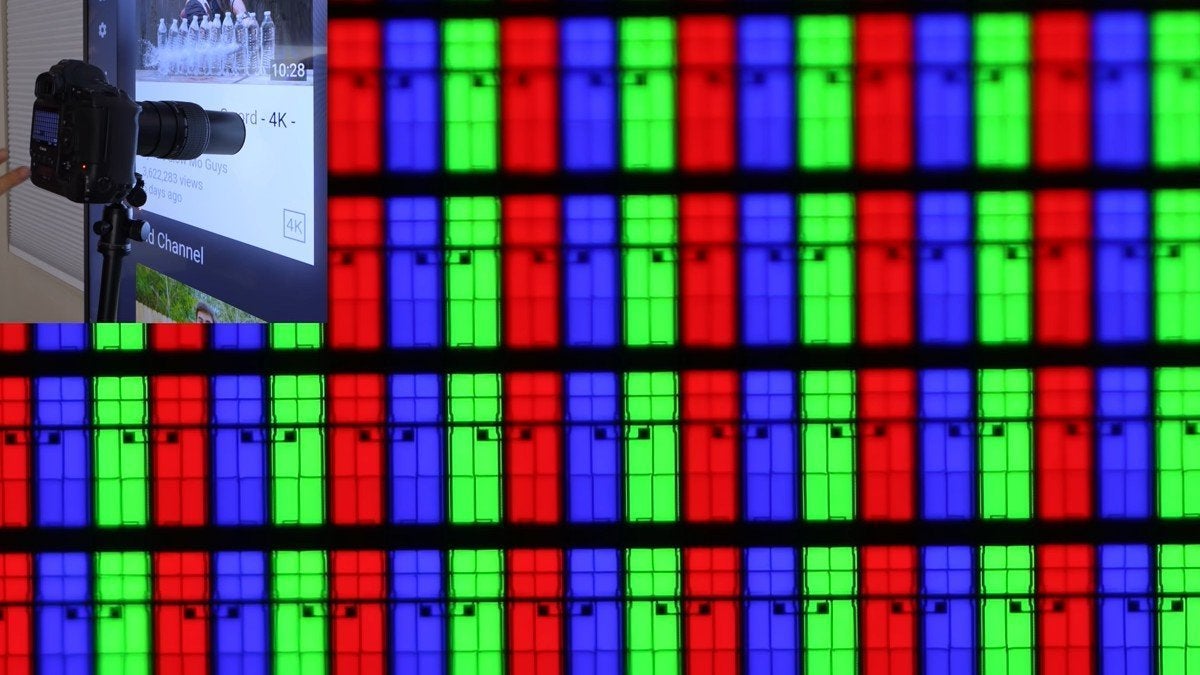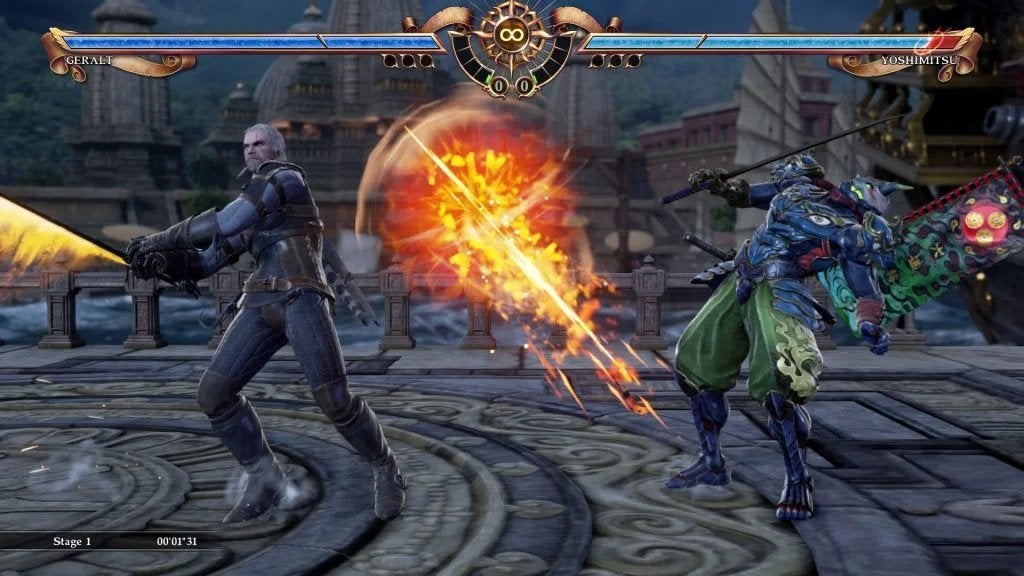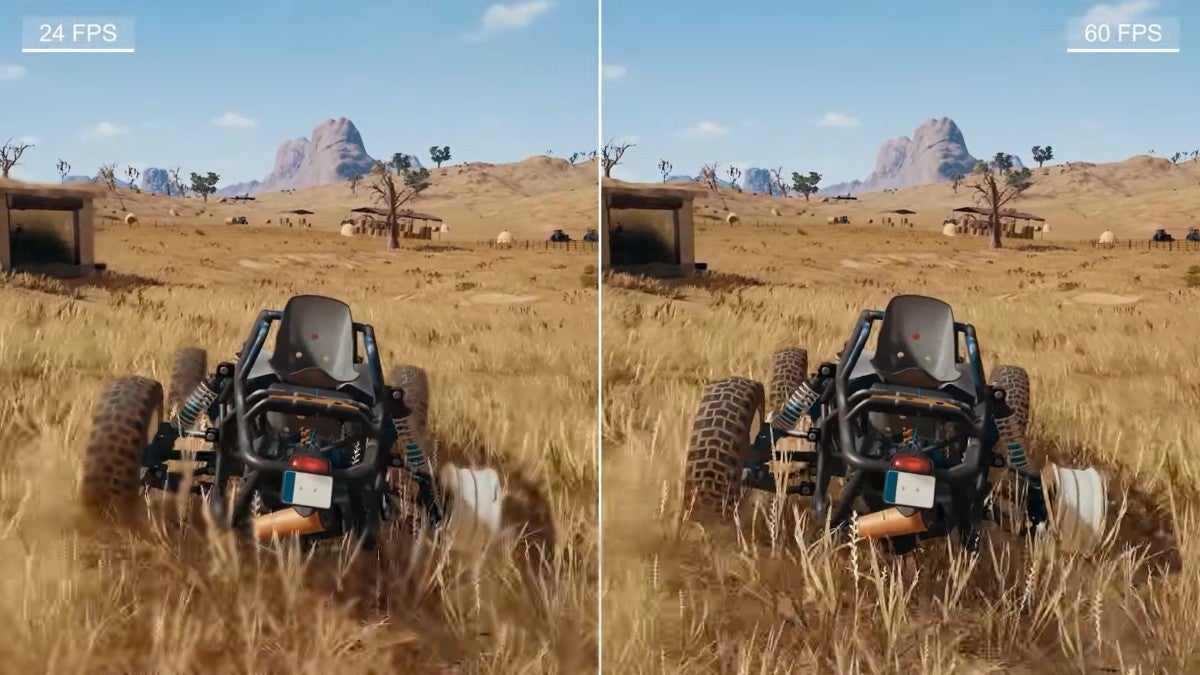![]() Key Takeaway
Key Takeaway
The higher the FPS (frames per second) a game runs at, the smoother the animations will be. Also, a higher frame rate displays what is happening more accurately, which is important for fast-paced titles like many fighting games, action RPGs, and more.
Among the technical terms that often get thrown around, FPS in gaming is one of the most common. Unlike in movies or TV shows, the frames per second in a video game heavily impact how people experience it.
Table Of Contents
At What FPS Do People See Motion Instead of Still Images?

Most people can visually process individual images that are moving at 12 frames per second or less. At this point, you can identify the different frames. When things move faster than 12 FPS, however, they blend together and create the illusion of motion.
On a related note, the unit of measure for FPS is technically Hertz (Hz). Thankfully, the conversion rate is simple, as 1 frame per second is 1 Hertz. This is how monitors and televisions describe their visual display capabilities. For instance, you can find such devices at electronics stores that are rated at 30 Hz, 60 Hz, and more.
Where Did the Term “FPS” Come From?

FPS—frames per second—is originally a term that came from the film industry. A frame is an individual square on a film strip that contains a single image. As such, each still image captured is contained in its own frame.
When these frames are displayed in quick succession to play a film, they move at a rate that is measured per second. In the end, this has resulted in the playback speed of visual media getting referred to as frames per second. This is the most accurate way to talk about the topic. A bit later on, this got shortened to “FPS” for convenience.
Moreover, the term “movie” also comes from a similar origin. The word “movie” is short for the term “moving pictures.” This is used in the same context as “motion picture” in that it refers to frames that seem like they are moving thanks to the motion effect. Remember, all images that are displayed at higher than 12 FPS appear as if they are in motion to human eyes.
How Monitors Display Images

Every modern monitor is completely covered in pixel display units. Each of these units is responsible for the visual output of one pixel—which itself is composed of a red segment, a blue segment, and a green segment. When the monitor gets visual information, it adjusts every single one of the hundreds of pixels to display the correct image.
Everything you see on a modern monitor—be it your TV or computer screen—is displayed this way. The red, blue, and green segments of each pixel change within microseconds (1,000 of which fit into 1 millisecond) to keep up to date with the information it needs to represent.
For example, if you are playing a game about sailing on the ocean, this may cause the entire frame to be blue. During images like this, the red segment of each pixel would dim significantly or disappear altogether.
Since this happens so quickly, you won’t be able to track it. Also, each pixel is very small, so you won’t be able to specifically tell how they change. What’s more, you shouldn’t look at your monitor this closely. It’s bad for your eyes. Sit back, relax, and let your brain interpret the visual illusions as it wants.
Modern FPS in Gaming
Movies, TV shows, and video games all need to be at higher frame rates than 12 FPS to look good. Up until somewhat recently, 30 FPS was the minimum required for good animations in video games. Nowadays, for games on modern generation consoles—such as the PlayStation 5—60 FPS is considered to be the standard.
This isn’t the FPS ceiling by any means, as new technology can let games reach 120 FPS and higher. However, developers aren’t making such high frame rates common just yet. Currently, most reasonably-priced monitors tend to only reach 60 Hz, which is a big factor as to why most video games aren’t being produced at frame rates higher than this.
In the near future, as technology gets better, 120 Hz monitors will become more common—and cheaper. That’s not a guess, it is a fact. It will be at that point when video games will start being regularly produced at 120 FPS.
Why Does FPS in Gaming Matter?

Put simply, the more frames are packed into a second, the more chances you have to react to something in-game. For fast-paced genres like fighting games or action RPGs, this adds significantly to a gamer’s quality play.
Also, the more frames in a second, the smoother the animations will be. This results in games with higher frame rates looking more fluid and less janky.
Gaming at 30 FPS
Let’s break things down. First, let’s look at a game that runs at 30 FPS. In such a game, each frame is displayed for 1/30th of a second (roughly 33 milliseconds). Now, take into account that the average reaction speed for a human is 150 to 300 milliseconds. As such, it will take you about 5 to 10 frames to react to what’s happening on screen.
In short, if your character is about to get hit with an attack, you need at least 5 to 10 frames to see it coming and another few frames to decide and then execute the correct input for avoiding the incoming damage. Even if you’re the most skilled of veteran gamers, you’re unlikely to do all of that under 15 frames at 30 FPS.
As a point of comparison, many of the faster melee attacks in Elden Ring are far quicker than this. A normal one-handed attack with a scimitar only has an animation duration of 3 frames at 30 FPS.
In dynamic and fast-moving worlds, this is pretty limiting, as you can only react so quickly. Furthermore, 30 FPS isn’t a lot of time for things to happen. As another point of comparison, it takes you around 300 milliseconds (10 frames at 30 FPS) to fully blink (from the point where the eye begins to close to when it is fully open again).
In between each of the 30 frames at 30 FPS, the game basically has to fill in the gaps with suggested data. While, for the most part, this doesn’t hinder gameplay too much, it certainly decreases the accuracy of what is being represented on screen during action-packed moments.
Gaming at 60 FPS
At 60 FPS, there is literally twice as much visual information per second. Now, each frame is only on screen for just under 17 milliseconds. In addition to making the game look a lot smoother, this also creates more room for players to act.
The doubling of information doubles the accuracy of what is being displayed. This, in turn, lets gamers make more informed decisions and fine-tune their responses. Also, since there are more frames at which to act, things are more forgiving.
This is even more crucial in fighting games. The same reasoning applies but on a much more extreme scale. Fighting games are all about precise timing and little else, so, the more accurately the visual information is displayed, the better. This also rewards skilled gamers for becoming better at their preferred titles, as they gain advantages via faster reaction times.
An Example of Why 60 FPS Is Better Than 30 FPS
If there’s an incoming attack at 30 FPS and you’re 15 milliseconds late on triggering a parry, you will get hit. The game will not take into account things that happen during that frame, as this frame rate is not fast enough to catch such small details. Therefore, your response gets interpreted as happening at the beginning of the next frame—which is too late to avoid damage.
However, if the same thing happens at 60 FPS, you may not get hit, as triggering a parry 15 milliseconds late means you can still potentially successfully begin the parry animation before the next frame—though just barely. This is due to each frame being about 17 milliseconds, so a response made in less time than this can be picked up by the game before the next frame. At such speeds, this is more luck than skill, but it still matters!
Put another way: during the 1 frame at 30 FPS (which lasts 33 milliseconds) nothing you do will matter, as it’s too late to make an input. However, during the 2 frames that would occur at 60 FPS (each frame displayed at around 17 milliseconds—2 frames adding up to 33 milliseconds), there is a gap between the first and second frames during which your input can be picked up.


